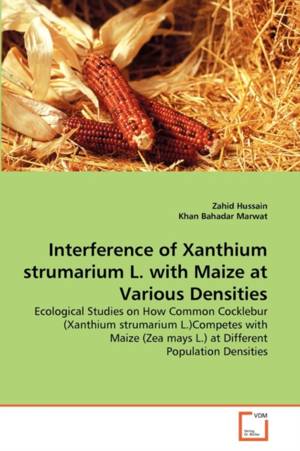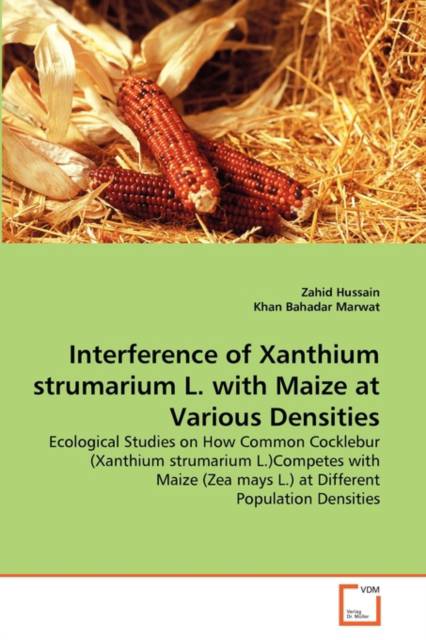
- Afhalen na 1 uur in een winkel met voorraad
- Gratis thuislevering in België vanaf € 30
- Ruim aanbod met 7 miljoen producten
- Afhalen na 1 uur in een winkel met voorraad
- Gratis thuislevering in België vanaf € 30
- Ruim aanbod met 7 miljoen producten
Zoeken
Interference of Xanthium strumarium L. with Maize at Various Densities
Ecological Studies on How Common Cocklebur (Xanthium strumarium L.)Competes with Maize (Zea mays L.) at Different Population Densities
Zahid Hussain, Khan Bahadar Marwat
Paperback | Engels
€ 58,45
+ 116 punten
Omschrijving
Common Cocklebur (Xanthium strumarium L.) is an emerging aggressive & invasive weed in crop fields in the Khyber Pakhtunkhwa (KP) Province of Pakistan. Among the crops, maize has been severely affected by X. strumarium in the region. In order to evaluate the competitive ability of X. strumarium in maize, field experiments were conducted at Agricultural Research Farm, KP Agricultural University Peshawar, Pakistan during 2006 and 2007 using a Randomized Complete Block Design with split plot arrangement, replicated three times. The main plots comprised of four varying maize densities: 5, 7.5, 10, and 12.5 plants per square meter, whereas seven contrasting densities of X. strumarium viz., 0, 2, 4, 6, 8, 10 and 12 plants per square meter were allotted to the subplots. During both the years, the grain yield of maize was highest in control plots (maize monoculture) at density of 7.5 plants per sq m. The density of X. strumarium at 8-12 plants per sq m reduced maize yield by 40 and 43% in 2006 and 2007, respectively indicating that X. strumarium is a strong competitor in maize. However, in both the experiments, the maize yield losses were rather comparable (24-26%) at all crop densities.
Specificaties
Betrokkenen
- Auteur(s):
- Uitgeverij:
Inhoud
- Aantal bladzijden:
- 128
- Taal:
- Engels
Eigenschappen
- Productcode (EAN):
- 9783639351637
- Verschijningsdatum:
- 4/05/2011
- Uitvoering:
- Paperback
- Formaat:
- Trade paperback (VS)
- Afmetingen:
- 152 mm x 229 mm
- Gewicht:
- 199 g

Alleen bij Standaard Boekhandel
+ 116 punten op je klantenkaart van Standaard Boekhandel
Beoordelingen
We publiceren alleen reviews die voldoen aan de voorwaarden voor reviews. Bekijk onze voorwaarden voor reviews.











